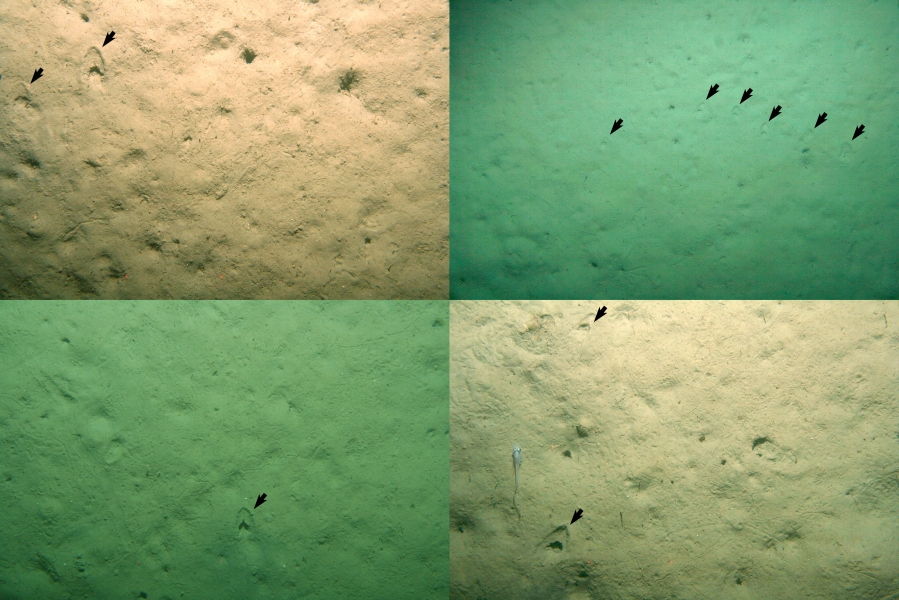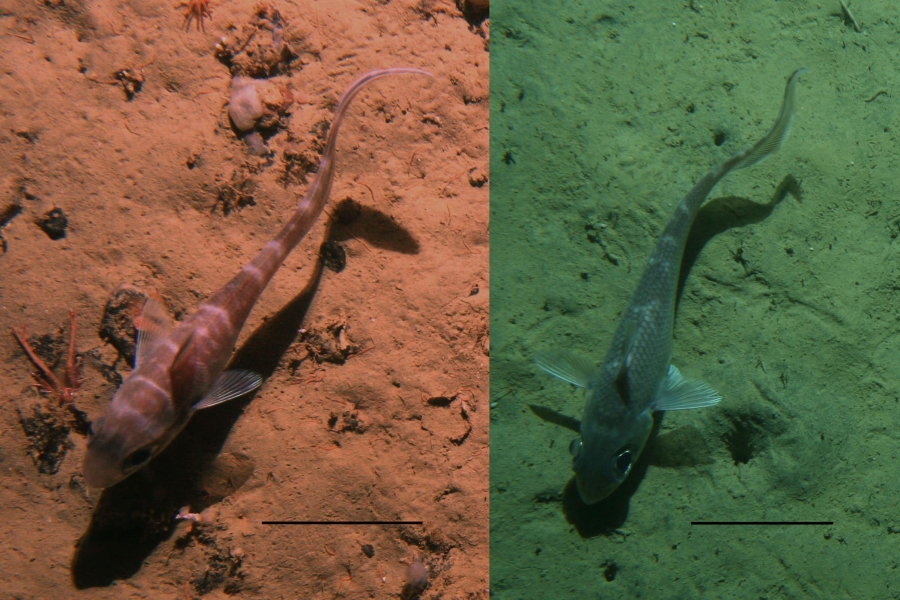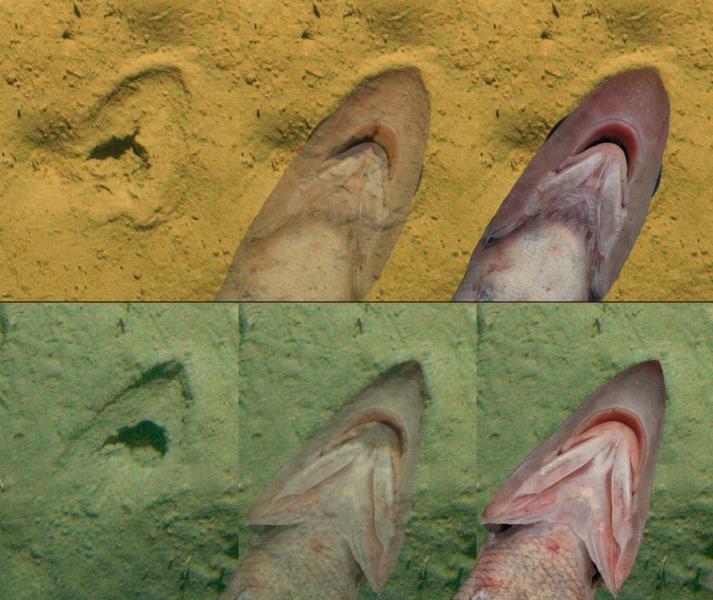NIWA scientists have discovered the origins of cryptic markings found in Aotearoa New Zealand’s deep sea. While studying footage from a 2013 Chatham Rise survey, researchers kept seeing horseshoe-shaped imprints in the seabed but had no idea what they were or why they were there.
After much head scratching, NIWA's Invertebrate Collection Manager Sadie Mills worked with her colleagues – Alan Hart, Niki Davey, and Caroline Chin – and came up with an idea. But to test her theory, she needed colleague Darren Stevens - a fisheries scientist with a particular interest in deepsea animals.“Sadie sent me a bunch of images from the survey and asked whether they had been caused by a deepsea rattail, also known as a grenadier.
“She suspected that what we were seeing was lebensspuren – which is a German word meaning ‘life traces’, referring to physical evidence of life that is left behind in the environment. We wondered if these markings could be traces of a rattail foraging in the sediment for its next meal,” said Darren.
To investigate this theory, Darren overlaid head profile images of specific rattails with images showing clearly defined seabed impressions.
“The reason we could point to a specific species is because of their unique head features – these types of rattails have a long snout and an extendable mouth on the underside of their head that allow them to feed off the seafloor, something that other species do not,” said Darren.
To the team’s delight, the images fit together perfectly.
“I had a hunch this might work but I was really surprised how well the head profile images matched the impressions. We were able to provide fairly good evidence that these impressions were made by two grenadier species. “This new discovery could allow future surveys to identify soft sediment feeding areas and critical fish habitats for these species, which are a key part of the ecosystem,” said Darren.
Sadie says that NIWA teams often see mysterious traces of life down in the deep but can rarely prove where they come from.
“NIWA uses a technology called the Deep Towed Imaging System (DTIS) to allow us to see the seafloor in stunning detail. When our people review this footage, they often see markings in the sediment, but unfortunately most of them are unknown to science and we can only guess what might have made them, let alone find convincing proof.
“It is so cool to finally have the validation that what we saw on the video was actually rattails feeding in the mud. It's like getting a nice reward at the end of many years of watching DTIS footage,” said Sadie.
New Zealand has over 70 species of rattail, being an abundant and important animal in the ecology of deepsea communities.
The survey was led by NIWA marine ecologist Dr Dave Bowden and a paper detailing the findings was published in Deep Sea Research.




